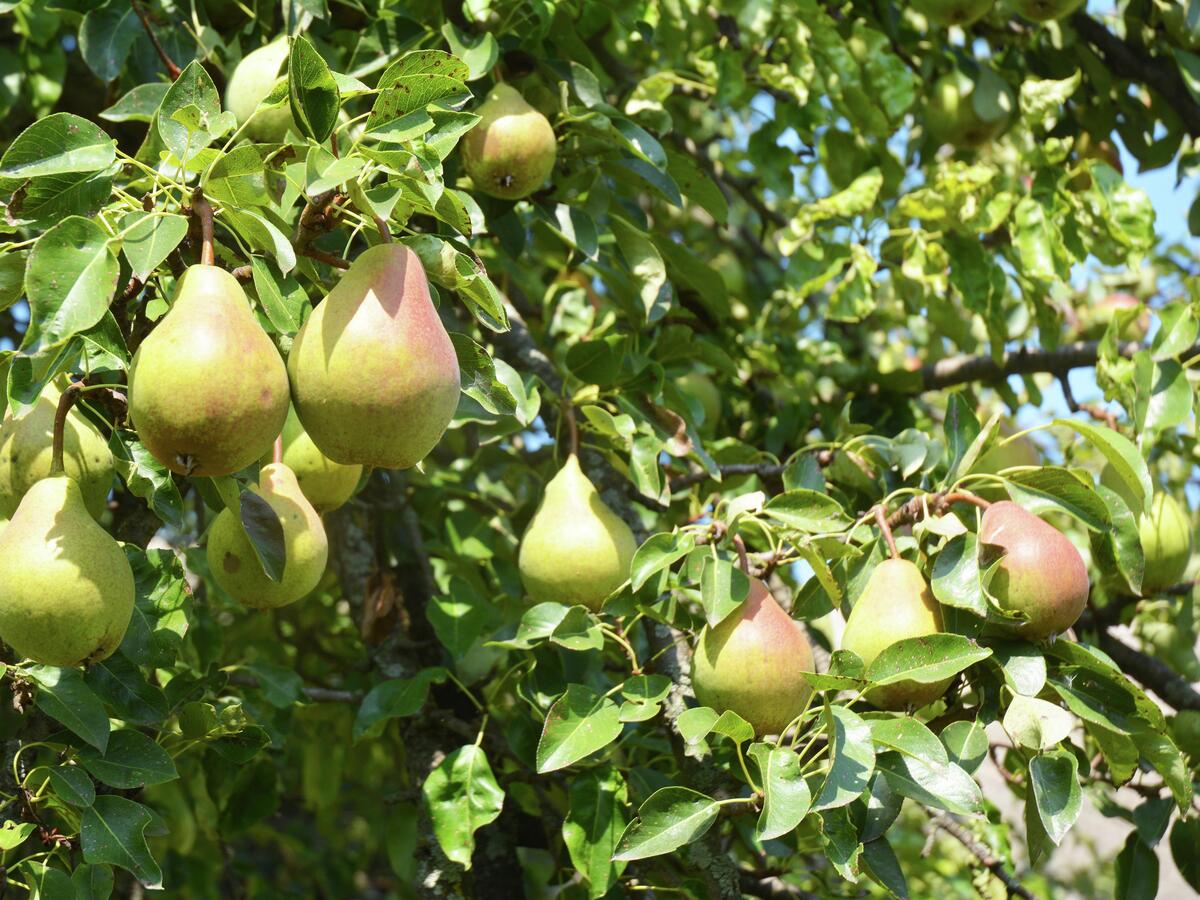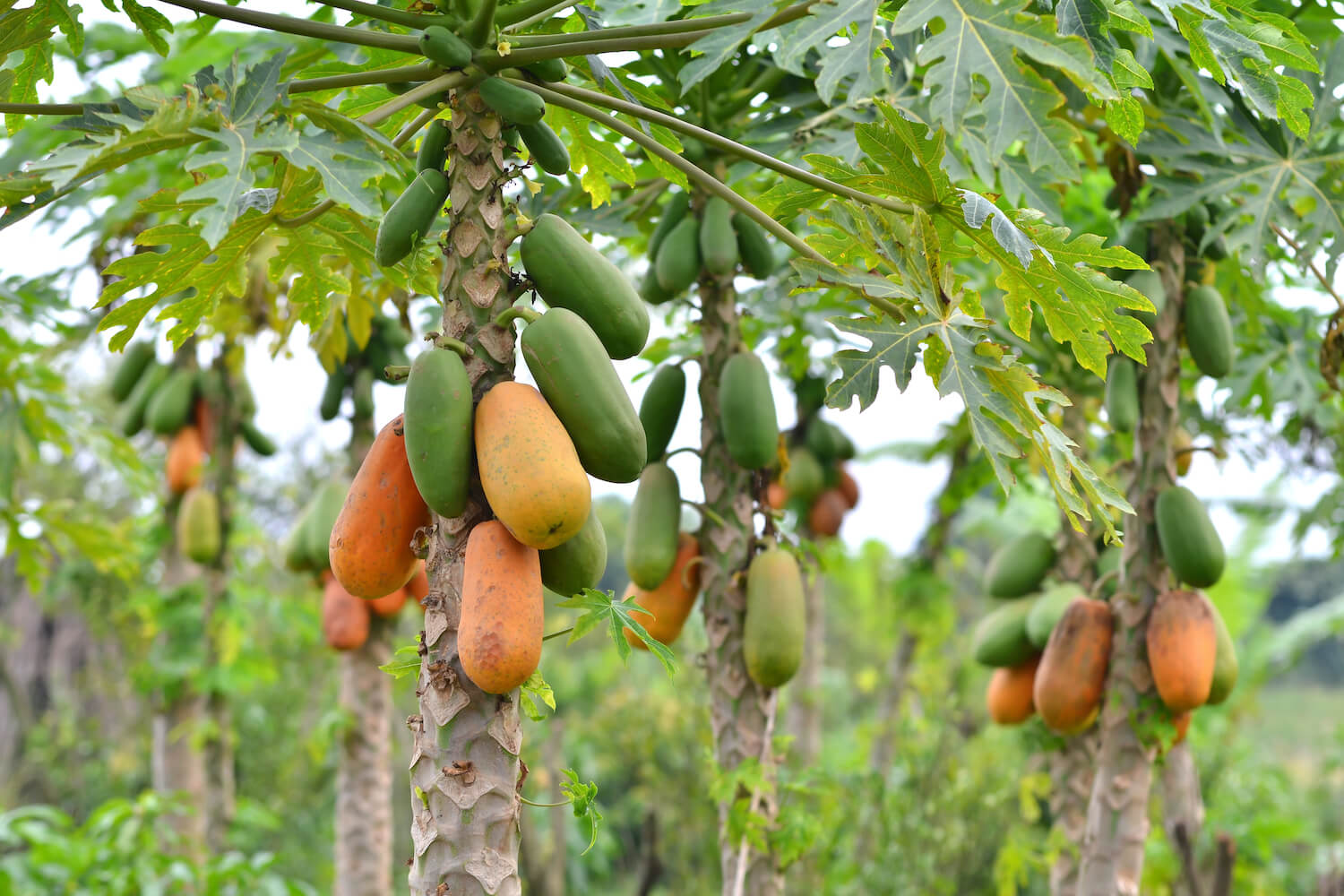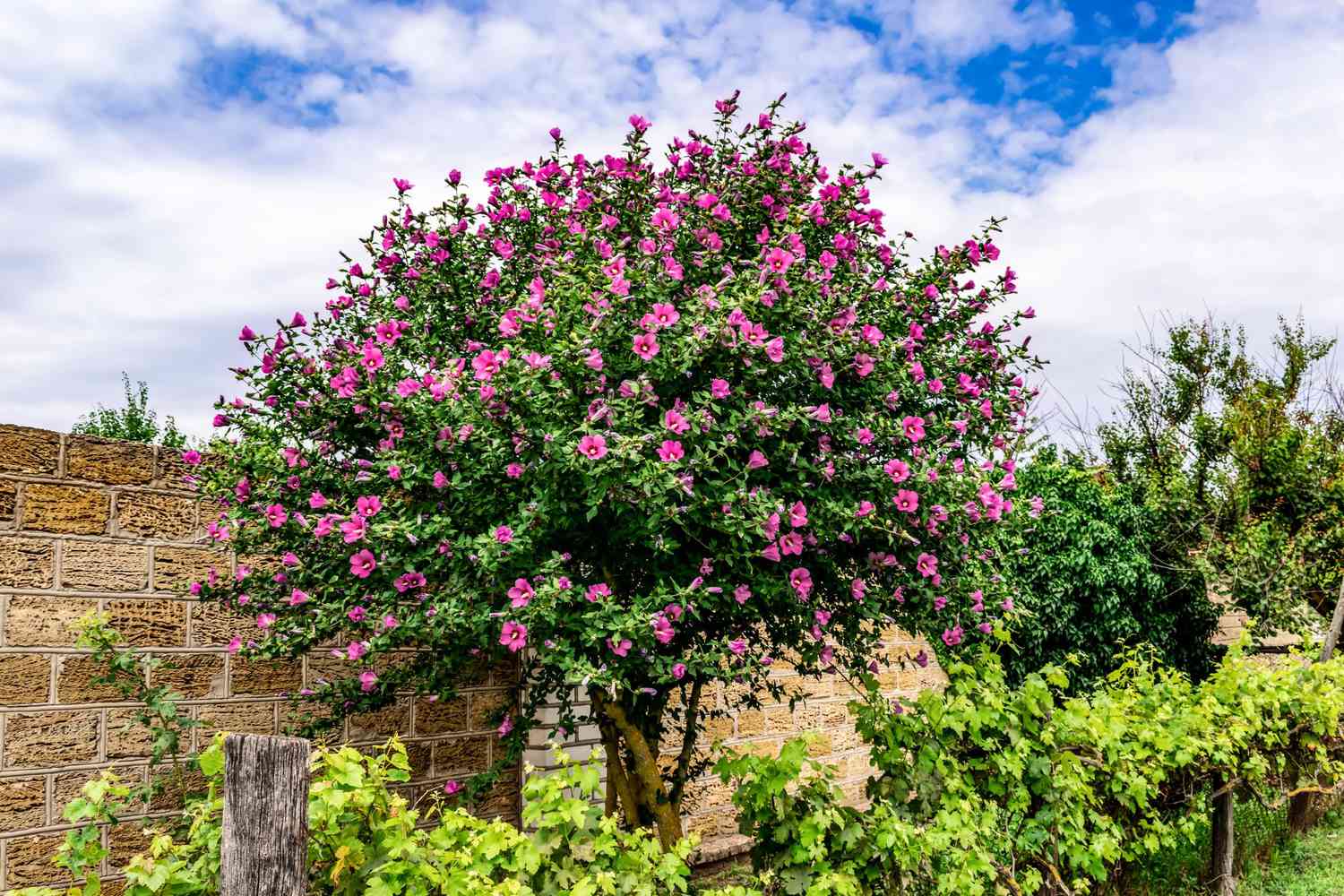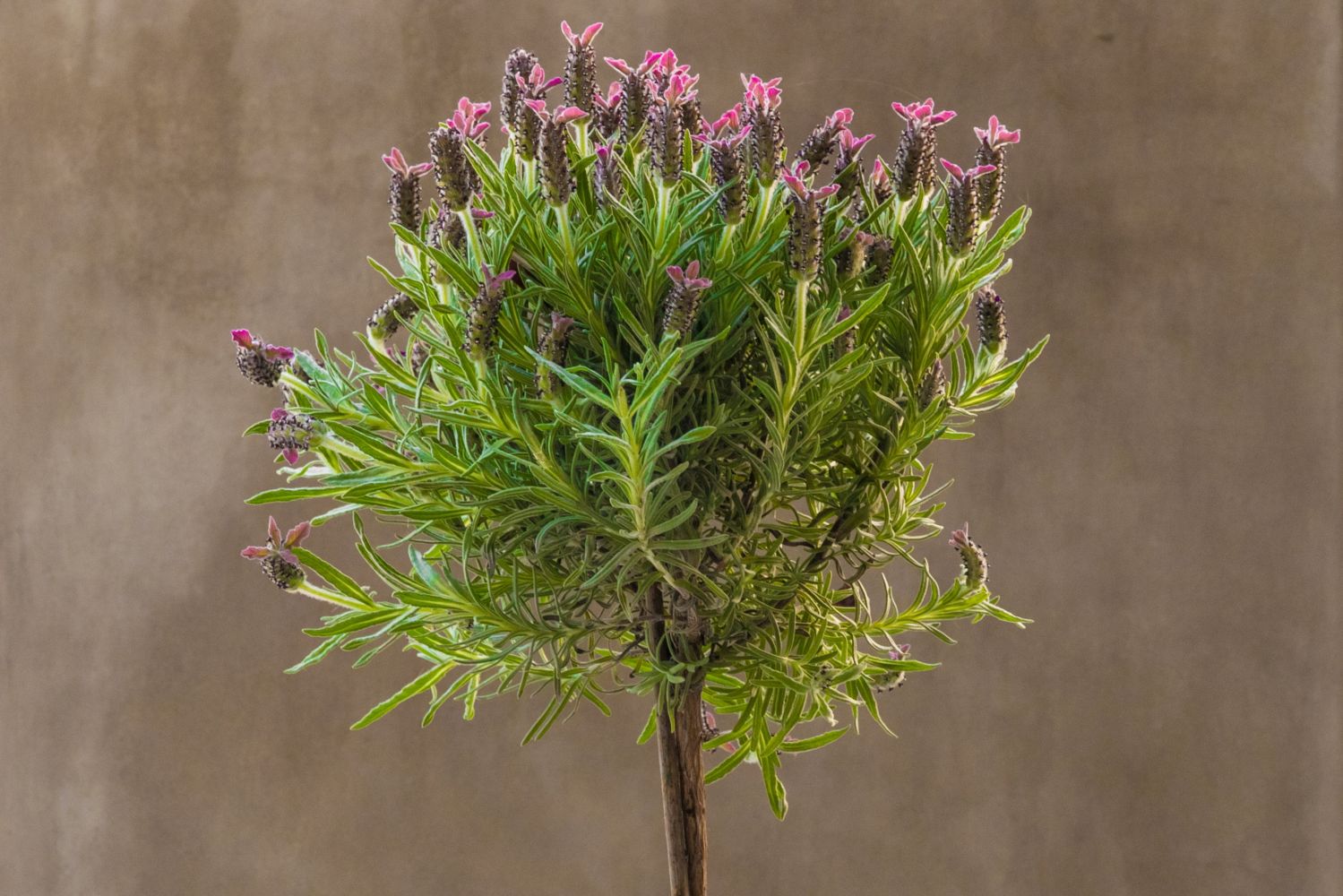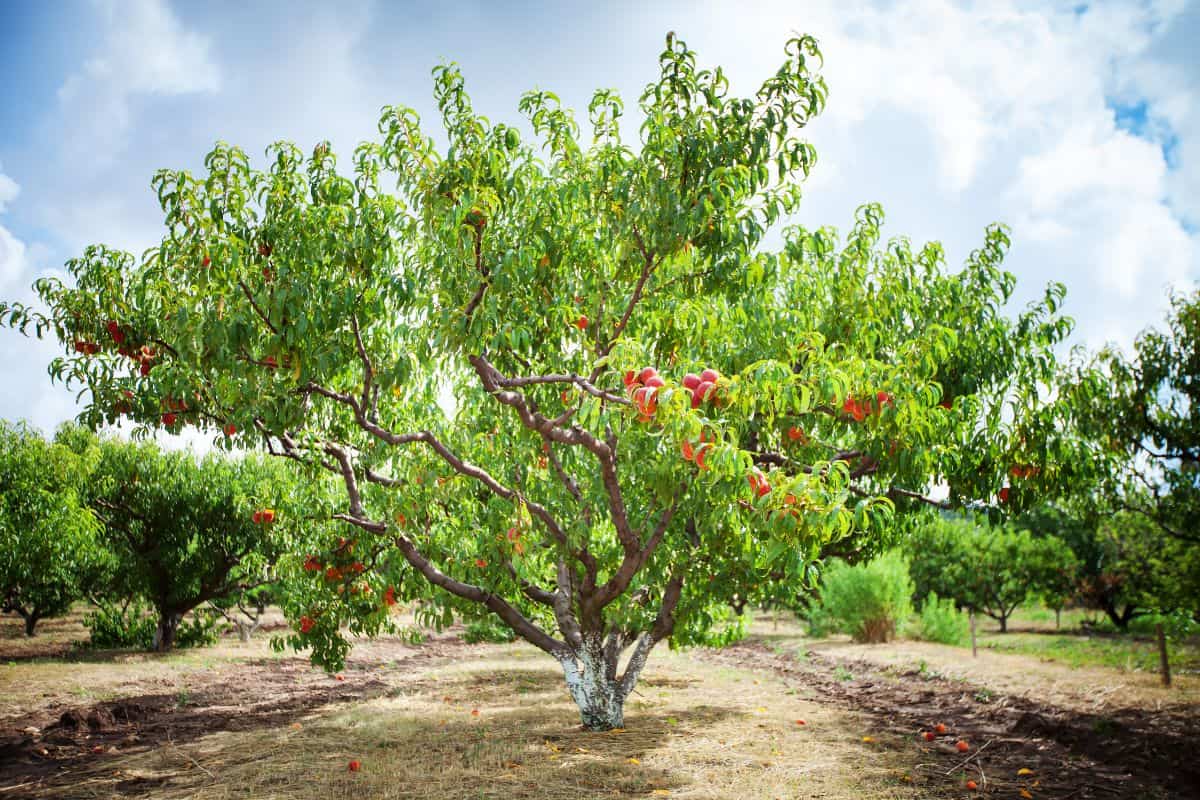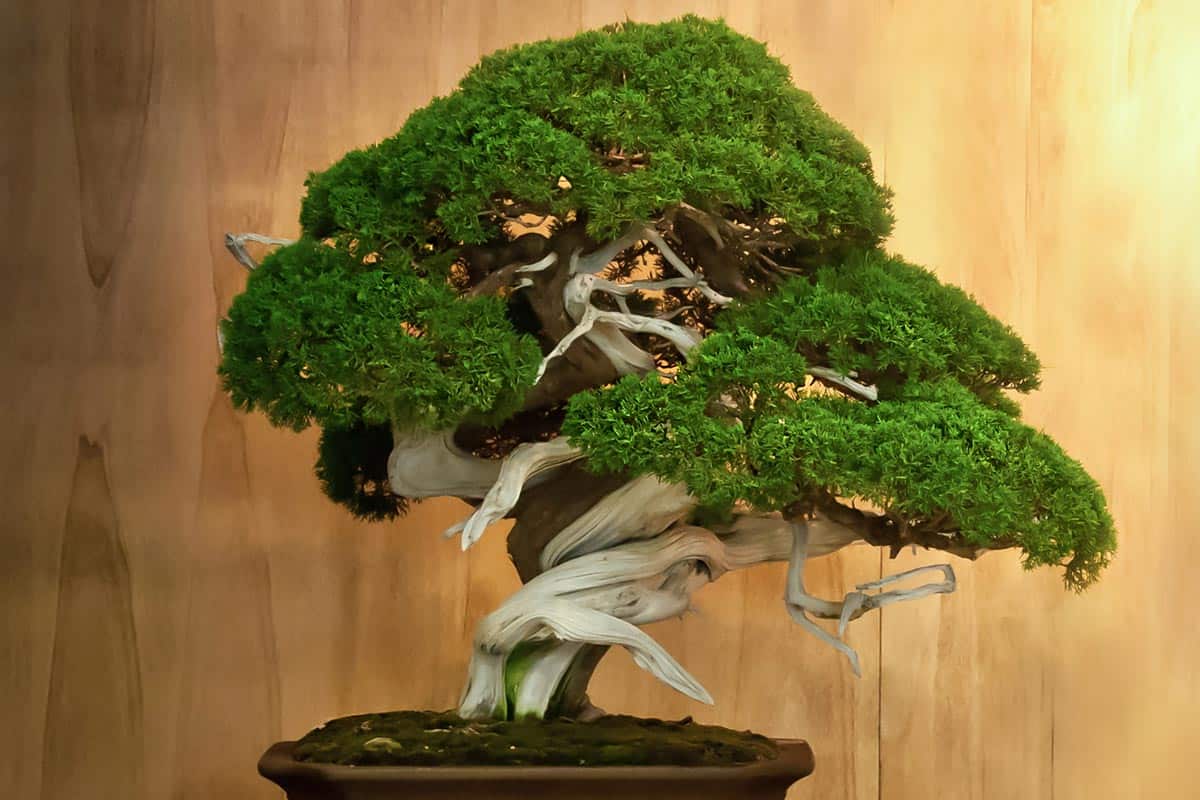Home>Types of Gardening>Ornamental Gardening>How Big Do Zebra Succulents Get
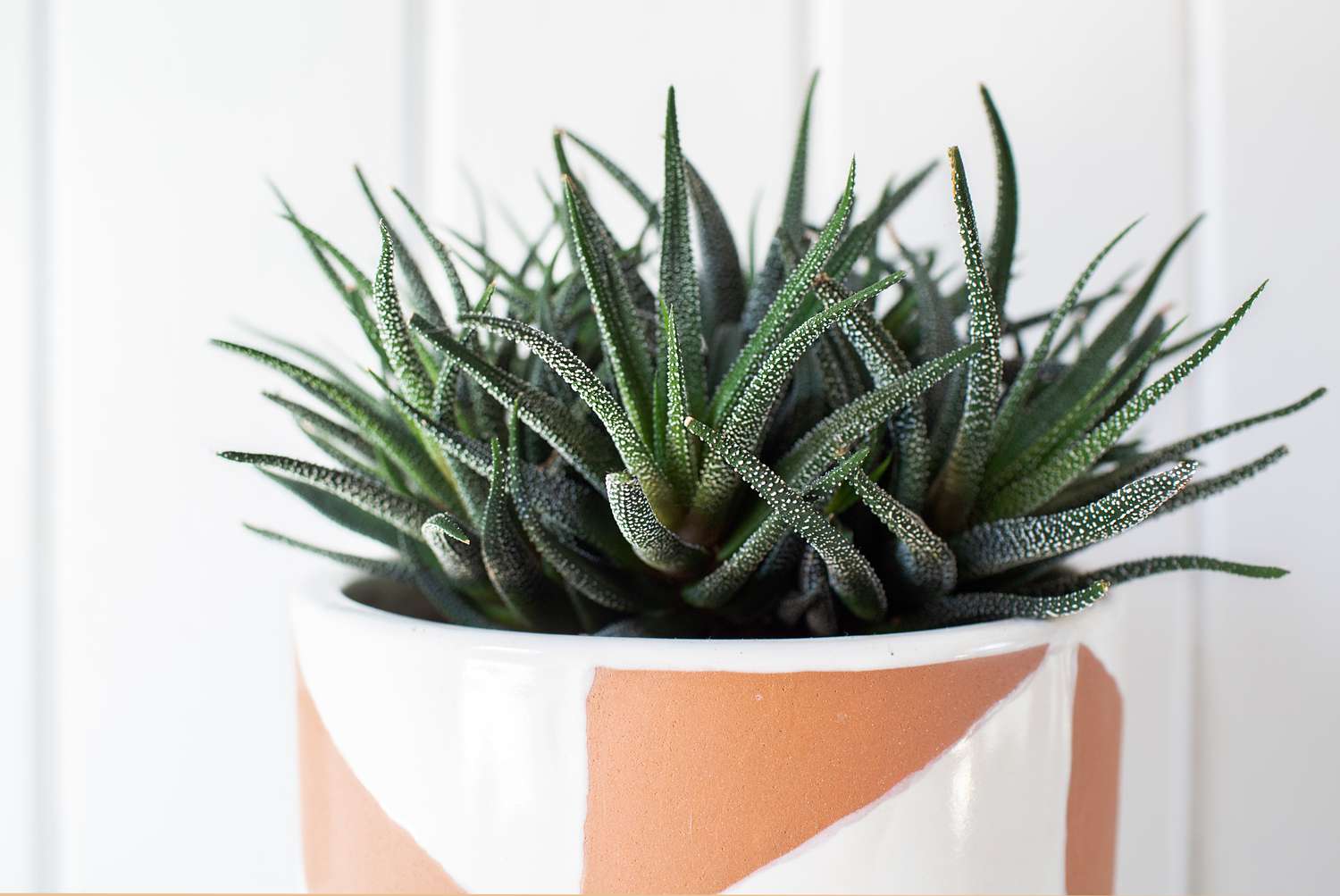

Ornamental Gardening
How Big Do Zebra Succulents Get
Modified: January 22, 2024
Find out how big zebra succulents can get in your ornamental gardening projects. Explore their growth potential and choose the perfect size for your garden.
(Many of the links in this article redirect to a specific reviewed product. Your purchase of these products through affiliate links helps to generate commission for Chicagolandgardening.com, at no extra cost. Learn more)
Table of Contents
Introduction
Welcome to the fascinating world of zebra succulents! These unique and striking plants have gained popularity among ornamental gardening enthusiasts for their distinctive appearance and low-maintenance requirements. Zebra succulents, scientifically known as Haworthia Fasciata, are native to South Africa and belong to the Asphodelaceae family.
The name “zebra succulents” comes from the striking horizontal white stripes that resemble a zebra’s pattern, which adorn their fleshy, dark green leaves. This eye-catching feature makes them a favorite among plant collectors and enthusiasts seeking to add a touch of exotic beauty to their indoor or outdoor spaces.
Not only are zebra succulents aesthetically pleasing, but they are also relatively easy to care for, making them a suitable choice for both experienced gardeners and beginners. These plants have a slow growth rate, which allows them to adapt well to different environmental conditions. Understanding their growth patterns, size potential, optimal growing conditions, and maintenance requirements is essential to ensure their longevity and beauty in your garden.
In this article, we will delve into the fascinating world of zebra succulents, exploring their growth habits, optimal conditions for growth, maintenance tips, and common issues faced by gardeners. By the end, you will have gained a comprehensive understanding of these captivating plants, empowering you to create a thriving zebra succulent garden.
What are Zebra Succulents?
Zebra succulents, scientifically known as Haworthia Fasciata, are a type of perennial succulent plant native to the African continent. These plants belong to the Asphodelaceae family, which also includes other popular succulents like Aloe and Gasteria.
One of the most distinctive features of zebra succulents is their striking appearance. They have thick, fleshy leaves that are arranged in a rosette pattern. The leaves are dark green in color and are adorned with horizontal white stripes, resembling the pattern of a zebra’s skin. This unique coloration is where the plant gets its common name.
Zebra succulents are relatively small in size, typically reaching a height of around 4-6 inches (10-15 centimeters) and a width of 6-8 inches (15-20 centimeters). However, they can vary in size depending on the specific variety and growing conditions. Despite their compact size, zebra succulents can produce offsets, or small plantlets, which can be separated and propagated to create new plants.
These succulents are popular among collectors and gardeners due to their captivating appearance and low-maintenance requirements. They make great additions to indoor gardens, terrariums, or as decorative accents in outdoor rock gardens. Zebra succulents can thrive both indoors and outdoors, making them versatile options for ornamental gardening.
In addition to their visual appeal, zebra succulents are known for their ability to tolerate a wide range of environmental conditions. They are native to arid regions of South Africa, where they have adapted to survive in dry, rocky terrain with limited water availability. Their thick, succulent leaves allow them to store water, making them highly drought-tolerant.
Overall, zebra succulents are prized for their striking appearance, resilience, and adaptability. Whether you are a beginner gardener or an experienced enthusiast, these unique plants can add a touch of beauty and intrigue to any indoor or outdoor space.
Factors Influencing the Size of Zebra Succulents
Several factors can influence the size of zebra succulents, including genetics, growing conditions, and care practices. Understanding these factors can help you create an environment that promotes healthy growth and enables the plants to reach their full size potential.
Genetics: The genetic makeup of zebra succulents plays a significant role in determining their ultimate size. Different varieties or cultivars may have varying growth habits, with some naturally growing larger than others. When selecting zebra succulents for your garden, you can choose specific strains known for their larger size if that is your preference.
Growing Conditions: The environment in which zebra succulents are grown greatly impacts their size. Adequate sunlight, temperature, and soil quality are crucial for optimal growth. These plants thrive in bright, indirect light, so placing them near a sunny window or providing them with supplemental grow lights can promote healthy growth. Temperature-wise, zebra succulents prefer moderate temperatures ranging from 65-80°F (18-26°C) during the growing season, but they can tolerate slightly colder temperatures in winter.
The soil should be well-draining, as zebra succulents are prone to root rot if they sit in waterlogged soil. A mixture of cactus or succulent soil combined with perlite or pumice will ensure proper drainage. Additionally, adding organic matter like compost can enhance soil fertility and provide essential nutrients for growth.
Watering and Fertilizing: Proper watering is crucial for the size and health of zebra succulents. These plants are adapted to arid conditions and are drought-tolerant, so overwatering can lead to root rot and stunted growth. It’s best to let the soil dry between waterings and provide a thorough soak when watering, allowing excess water to drain away.
When it comes to fertilizing, zebra succulents do not require frequent feedings. Applying a balanced, diluted liquid fertilizer during the growing season, about once every month or every other month, can provide the necessary nutrients to support healthy growth. Avoid over-fertilizing, as this can cause salts to build up in the soil and harm the plants.
Container Size: The size of the container in which zebra succulents are planted can influence their growth. A smaller pot can restrict their root growth and limit their overall size. As these plants produce offsets, it’s essential to periodically repot them into slightly larger containers to allow for their expansion and development.
Pruning and Propagation: Pruning zebra succulents can also impact their size. Regularly removing any dead or dying leaves can help maintain the plant’s overall health and appearance. Additionally, propagating the offsets produced by zebra succulents can enable you to expand your collection and control the size of the plants.
By understanding and optimizing these influencing factors, you can create an environment that allows your zebra succulents to thrive and reach their full size potential.
Optimal Growing Conditions for Zebra Succulents
To ensure the healthy growth and well-being of your zebra succulents, it is crucial to provide them with the optimal growing conditions. These plants are adapted to thrive in arid environments, and replicating those conditions is key to their success.
Light: Zebra succulents prefer bright, indirect light. Place them near a window with filtered sunlight or provide them with artificial grow lights if you’re growing them indoors. Avoid exposing them to direct, intense sunlight for long periods, as this can scorch their leaves.
Temperature: Zebra succulents thrive in moderate temperatures. During the growing season, aim for a temperature range of around 65-80°F (18-26°C). They can tolerate slightly cooler temperatures in winter, but it’s best to keep them above 50°F (10°C).
Soil: Well-draining soil is essential for zebra succulents as they are prone to root rot if left in overly moist conditions. Use a well-draining cactus or succulent soil mix. You can also amend the soil with perlite or pumice to improve drainage. Avoid heavy potting soils or those that retain too much moisture.
Watering: Zebra succulents have low water requirements due to their adaptation to arid conditions. Allow the soil to dry out between waterings to prevent overwatering. When watering, give them a thorough soak, ensuring that excess water drains away. Be cautious not to let them sit in standing water as this can lead to root rot.
Fertilization: Zebra succulents are not heavy feeders and can thrive without frequent fertilization. Apply a diluted, balanced liquid fertilizer during the growing season, around once a month or every other month. Avoid over-fertilizing, as it may cause salts to build up in the soil, damaging the plants.
Humidity: Zebra succulents prefer low humidity levels. They are well-suited for indoor environments with drier air, but they can also tolerate slightly more humid conditions. If you live in a humid climate, ensure proper air circulation around the plants and avoid overcrowding them to prevent moisture-related issues.
Container: Choosing the right container is essential for zebra succulents. Opt for a container with drainage holes to allow excess water to escape. Ensure the pot is slightly larger than the current size of the plant, providing enough room for growth without being excessively large.
Propagation: Zebra succulents can be propagated from offsets, small plantlets that grow alongside the mother plant. Gently separate the offsets and plant them in well-draining soil. They will establish themselves and grow into new plants.
By providing the optimal growing conditions of bright, indirect light, moderate temperatures, well-draining soil, appropriate watering practices, minimal fertilization, low humidity, suitable containers, and propagation opportunities, you can ensure the successful and thriving growth of your zebra succulents.
Understanding the Growth Patterns of Zebra Succulents
Understanding the growth patterns of zebra succulents is essential for providing them with the care they need to thrive. These plants have unique characteristics and behaviors that contribute to their overall growth and development.
Growth Rate: Zebra succulents have a relatively slow growth rate compared to other succulent species. They typically grow about 4-6 inches (10-15 centimeters) in height and 6-8 inches (15-20 centimeters) in width. However, the growth rate can vary depending on the specific variety and growing conditions.
Rosette Formation: Zebra succulents grow in a rosette pattern, with their thick, fleshy leaves arranged in a circular shape. As the plant matures, new leaves emerge from the center of the rosette, gradually expanding the overall size of the plant. This growth pattern gives zebra succulents their characteristic compact and clustered appearance.
Offset Production: One fascinating aspect of zebra succulents is their ability to produce offsets or “pups.” These are small plantlets that grow alongside the mother plant. Over time, these offsets can develop their own root system and become independent plants. This natural propagation method allows for the expansion of zebra succulent collections and enables gardeners to control the size and spread of their plants.
Root System: Zebra succulents have a shallow root system due to their adaptation to arid environments. Their roots tend to spread out horizontally near the surface rather than grow deeply into the soil. This root structure aids in water absorption and allows the plants to efficiently gather moisture from rain or irrigation.
Dormancy: Zebra succulents have a natural dormancy period during the winter months. During this time, their growth slows down, and they may appear less vibrant. It is normal for the older leaves to wither or die off, making way for new growth in the spring. During dormancy, reduce watering frequency and provide slightly cooler temperatures to mimic their natural winter conditions.
Vertical Growth: While zebra succulents primarily grow in a rosette form, they may also exhibit some vertical growth. Some varieties have elongated leaves that can grow upwards, adding height and visual interest to the overall appearance of the plant. This vertical growth is more likely to occur in outdoor settings with ample sunlight and space for the plant to grow without constraints.
Understanding these growth patterns will help you anticipate and respond to the needs of your zebra succulents. By providing the right conditions and care, you can support their slow but steady growth, encourage offset production, and enjoy the unique characteristics of these captivating plants.
Pruning and Maintenance of Zebra Succulents
Pruning and maintenance are essential aspects of caring for zebra succulents, ensuring their health, appearance, and longevity. Proper pruning techniques and regular maintenance practices can help keep these plants in optimal condition. Here are some tips to help you with the pruning and maintenance of your zebra succulents.
1. Removing Dead or Dying Leaves: As zebra succulents grow, older leaves towards the base of the plant may naturally wither or die off. It is important to remove these dead or dying leaves promptly. Using clean and sharp pruning shears or scissors, gently trim the leaves close to the base of the plant. This helps maintain the overall health and appearance of the plant and prevents rotting or pest infestations.
2. Controlling Size: If your zebra succulent starts to outgrow its designated space, you may need to control its size by pruning. Using clean and sharp pruning shears, carefully trim away the outer leaves or offsets that are contributing to the excessive growth. Take care not to remove too many leaves at once, as this can stress the plant. Pruning can be done at any time of the year, but avoid heavy pruning during the winter dormancy period.
3. Propagation: Zebra succulents naturally produce offsets or pups, which can be gently separated from the mother plant and propagated to create new plants. When the offsets have developed their own roots, carefully remove them by gently pulling them away or using clean and sharp scissors. Plant the offsets in well-draining soil, and make sure to keep them slightly moist until they establish their own root systems.
4. Regular Cleaning: Zebra succulents are prone to accumulating dust and debris on their leaves, which can hinder their ability to photosynthesize. Regularly wipe down the leaves with a damp cloth or gently spray them with water to remove any dust or dirt. Avoid using any cleaning products or chemicals, as these can harm the plant.
5. Monitoring for Pests and Diseases: Keep a close eye on your zebra succulents for any signs of pests or diseases. Common pests that may affect these plants include mealybugs and scale insects. If you notice any signs of infestation, treat the affected areas with an appropriate organic insecticide or use a mixture of water and mild soap to manually remove the pests. Additionally, be vigilant for any signs of fungal or bacterial diseases such as root rot. If you suspect any disease, address it promptly to prevent further damage.
6. Environmental Considerations: Regularly assess the growing conditions of your zebra succulents and make adjustments as needed. Check the quality of the soil and ensure it remains well-draining. Monitor the light levels and ensure that they receive adequate bright, indirect light. Adjust watering practices based on the plant’s needs and the surrounding climate.
By implementing these pruning and maintenance practices, you can ensure that your zebra succulents remain healthy, vibrant, and a stunning addition to your ornamental garden.
Common Issues and Solutions
While zebra succulents are generally resilient and easy to care for, they can still face some common issues. Being aware of these problems and their solutions will help you address them promptly and ensure the well-being of your plants.
1. Overwatering: One of the most common problems with zebra succulents is overwatering. These plants are adapted to arid conditions and have low water requirements. Overwatering can lead to root rot and cause the leaves to become mushy or yellow. To prevent overwatering, allow the soil to dry out between waterings and ensure the pot has proper drainage.
Solution: Adjust your watering frequency and ensure that the soil is dry at least an inch (2.5 cm) below the surface before watering again. When watering, give the plant a thorough soak and allow excess water to drain away completely.
2. Underwatering: While overwatering is a common issue, underwatering can also occur. If zebra succulents are not receiving enough water, their leaves may become shriveled and discolored. Additionally, the plant may show signs of wilting or drooping.
Solution: Monitor the soil moisture levels and water the plant whenever the soil feels dry. Give the plants a thorough soaking, and ensure that the water reaches the roots. However, avoid waterlogging the soil, as excessive moisture can lead to root rot.
3. Lack of Light: Insufficient light can cause zebra succulents to become leggy or stretched out. If they do not receive enough light, the leaves may lose their vibrant colors, and the plant may appear weak or elongated.
Solution: Ensure that your zebra succulents receive bright, indirect light. Place them near a window where they can receive several hours of sunlight each day, or use artificial grow lights to supplement the lighting. Rotate the plant occasionally to ensure even growth.
4. Pest Infestations: Zebra succulents can be susceptible to pests such as mealybugs and scale insects. These pests can cause damage to the leaves and sap the plant’s vitality.
Solution: Regularly inspect your zebra succulents for signs of infestation, such as sticky residue, webbing, or small insects. If you notice any pests, treat the affected areas with a mild natural insecticide or wipe them away with a cotton swab dipped in rubbing alcohol. Repeat the treatment as necessary until the infestation is eliminated.
5. Stunted Growth: If your zebra succulents are experiencing slow or stunted growth, it may be due to inadequate light, poor soil quality, or improper watering practices.
Solution: Evaluate the growing conditions and make necessary adjustments. Ensure the plants receive adequate light, use a well-draining soil mix suitable for succulents, and adjust your watering routine to enable proper growth. If needed, consider repotting the plant into fresh soil to provide it with the necessary nutrients.
By being vigilant and addressing these common issues promptly, you can keep your zebra succulents healthy and thriving for years to come.
Conclusion
Zebra succulents, with their unique striped foliage and low-maintenance nature, are a captivating addition to any ornamental garden. By understanding their growth patterns, optimal growing conditions, and maintenance requirements, you can ensure the health and longevity of these striking plants.
Creating the ideal environment for zebra succulents involves providing them with bright, indirect light, moderate temperatures, well-draining soil, and appropriate watering practices. Regular maintenance, including pruning, cleaning, and monitoring for pests and diseases, is crucial for their well-being.
While they may face common issues such as overwatering, underwatering, lack of light, pest infestations, and stunted growth, these challenges can be overcome with proper care and attention. Adjusting watering routines, enhancing light exposure, addressing pest infestations, and monitoring the overall health of the plants are key aspects of maintaining vibrant and thriving zebra succulents.
Zebra succulents can bring a touch of exotic beauty and elegance to both indoor and outdoor spaces. Their slow growth rate and ability to produce offsets allow for easy propagation and collection expansion. With their charming rosette formation and striking striped leaves, they are sure to captivate the attention of any gardening enthusiast.
Now equipped with comprehensive knowledge of zebra succulents’ growth patterns, optimal conditions, and maintenance practices, you can confidently create a stunning display of these unique plants in your garden. By providing the right care and attention, you can enjoy the beauty and resilience of zebra succulents for years to come.


